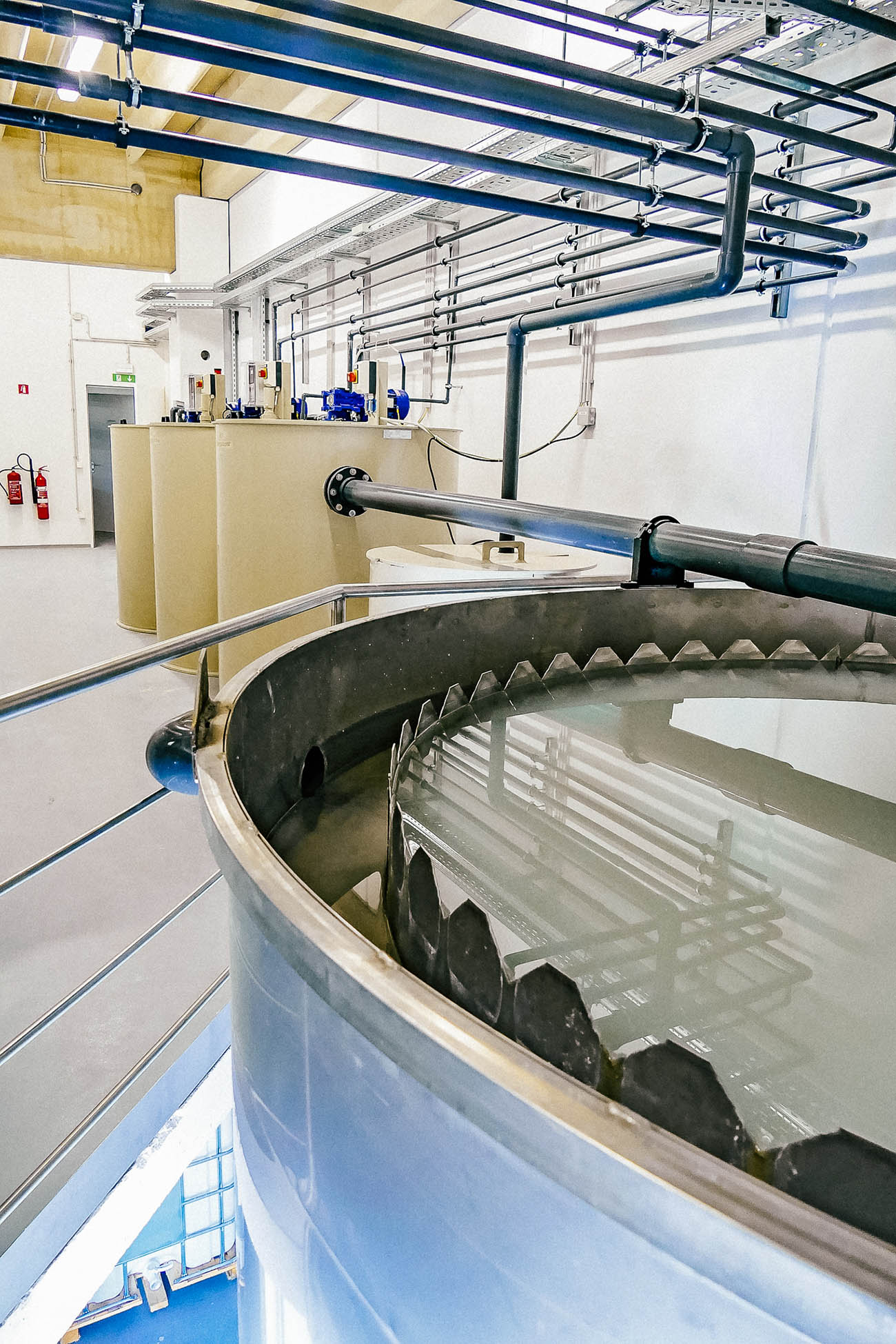Ecology
THE TECHNOLOGICAL EQUIPMENT CONSISTS OF AN ANODIC OXIDATION PLANT FOR ALUMINIUM ALLOY PRODUCTS AND SEMI-FINISHED PRODUCTS, A DEMINERALISED WATER TREATMENT PLANT AND A TREATMENT PLANT FOR PROCESS WASTE WATER.
A wastewater treatment plant is designed to treat wastewater from the production process to a level that is suitable for discharge into the sewerage system. Chemical-physical processes reduce pollutants through chemical reactions and physical separation processes. The entire treatment plant is automated and computer-controlled, the dosing of chemicals is constantly measured and optimised, and the individual stages of the wastewater treatment process are monitored.

ECOLOGY & ENVIRONMENT
The process wastewater from the anode oxidation plant is collected in four tanks and treated at the process wastewater treatment plant. The treatment plant also receives water from the regeneration of the demineralised water treatment plant and from the wet scrubbing of exhaust air from the anode oxidation plant.
Part of the treated water is recycled and the excess is discharged into the public sewerage network for urban waste water. Two inspection manholes are installed upstream of the discharge to the public sewer, where the quality of the wastewater is periodically monitored.



ECOLOGY & PEOPLE
Before starting work, all employees must be familiar with the properties of the auxiliary raw materials, working methods, instructions for using the equipment, the necessary protection for safe working and the disposal of waste and waste water. Employees must ensure that they are familiar with the safety data sheets for all chemicals and the instructions for working safely with process equipment. Only the minimum amount of chemicals needed to carry out the day's work is stored in the plant. All employees must be professionally qualified for the job and have received appropriate training in self-protection and environmental protection. The company obtained ISO 14001 certification in 2019.
